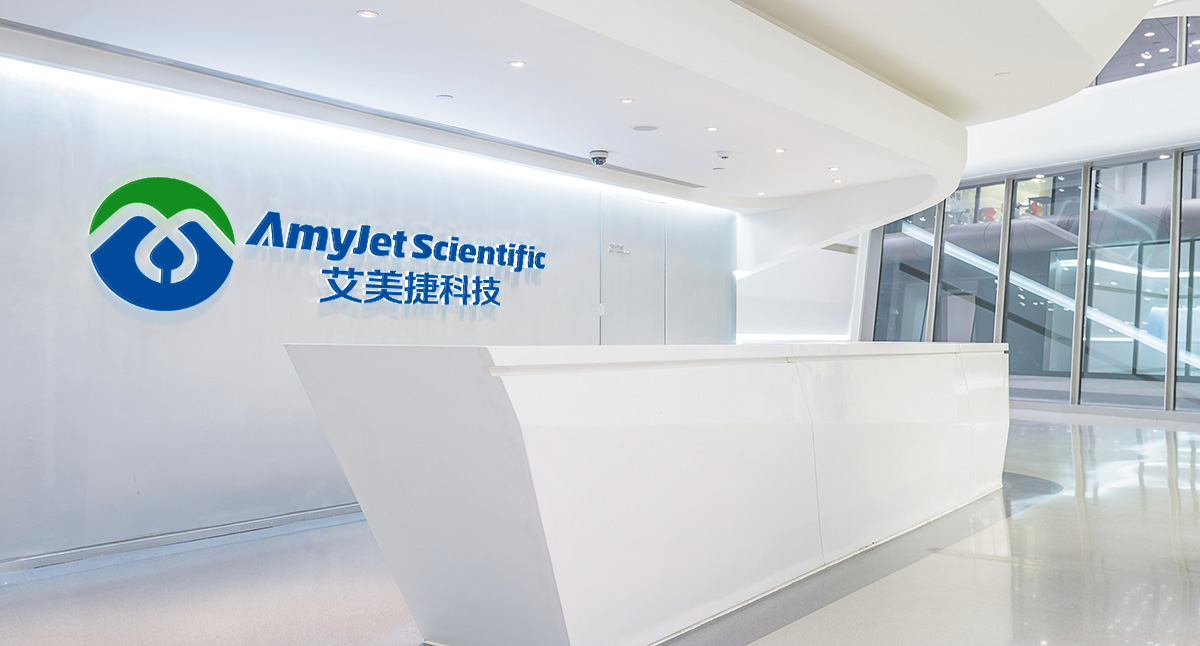
您的位置:首页 > 产品展厅 > 化工原料 > 化学试剂 > 生化试剂 > BioXCell RecombiMAb小鼠PD-1(CD279)抗体说明书
The RMP1-14-CP162 monoclonal antibody is a chimeric version of the original RMP1-14 antibody. The variable domain sequences are identical to the original RMP1-14 but the constant region sequences have been switched from rat IgG2a to mouse IgG1. The RMP1-14-CP162 antibody contains no Fc mutations just as the original rat IgG2a antibody does not. RMP1-14-CP162 reacts with mouse PD-1 (programmed death-1) also known as CD279. PD-1 is a 50-55 kDa cell surface receptor encoded by the Pdcd1 gene that belongs to the CD28 family of the Ig superfamily. PD-1 is transiently expressed on CD4 and CD8 thymocytes as well as activated T and B lymphocytes and myeloid cells. PD-1 expression declines after successful elimination of antigen. Additionally, Pdcd1 mRNA is expressed in developing B lymphocytes during the pro-B-cell stage. PD-1’s structure includes a ITIM (immunoreceptor tyrosine-based inhibitory motif) suggesting that PD-1 negatively regulates TCR signals. PD-1 signals via binding its two ligands, PD-L1 and PD-L2 both members of the B7 family. Upon ligand binding, PD-1 signaling inhibits T-cell activation, leading to reduced proliferation, cytokine production, and T-cell death. Additionally, PD-1 is known to play key roles in peripheral tolerance and prevention of autoimmune disease in mice as PD-1 knockout animals show dilated cardiomyopathy, splenomegaly, and loss of peripheral tolerance. Induced PD-L1 expression is common in many tumors including squamous cell carcinoma, colon adenocarcinoma, and breast adenocarcinoma. PD-L1 overexpression results in increased resistance of tumor cells to CD8 T cell mediated lysis. In mouse models of melanoma, tumor growth can be transiently arrested via treatment with antibodies which block the interaction between PD-L1 and its receptor PD-1. For these reasons anti-PD-1 mediated immunotherapies are currently being explored as cancer treatments.
BioXCell RecombiMAb小鼠PD-1(CD279)抗体:
RMP1-14-CP162单克隆抗体是原始RMP1-14抗体的嵌合版本。可变结构域序列与原始RMP1-14相同,但恒定区域序列已从大鼠IgG2a切换到小鼠IgG1。RMP1-14-CP162抗体不含Fc突变,就像原始大鼠IgG2a抗体不含一样。 RMP1-14-CP162与小鼠PD-1(程序性死亡-1)反应,也称为CD279。PD-1是由Pdcd50基因编码的55-1 kDa细胞表面受体,属于Ig超家族的CD28家族。PD-1在CD4和CD8胸腺细胞以及活化的T和B淋巴细胞和骨髓细胞上短暂表达。PD-1在成功消除抗原后表达下降。
此外,Pdcd1 mRNA在B细胞阶段的发育B淋巴细胞中表达。PD-1的结构包括ITIM(基于免疫受体酪氨酸的抑制基序),表明PD-1负调节TCR信号。PD-1通过结合其两个配体PD-L1和PD-L2来发出信号,PD-L7和PD-L1都是B1家族的成员。配体结合后,PD-1信号传导抑制T细胞活化,导致增殖减少,细胞因子产生和T细胞死亡。此外,已知PD-1在小鼠外周耐受和预防自身免疫性疾病中起关键作用,因为PD-1基因敲除动物表现出扩张型心肌病,脾肿大和外周耐受性丧失。诱导PD-L8表达在许多肿瘤中很常见,包括鳞状细胞癌、结肠腺癌和乳腺腺癌。

BioXCell艾美捷RecombiMAb小鼠PD-1(CD279)抗体规格:
# BXC-CP162
Isotype Mouse IgG1, κ
Recommended Isotype Control(s) InVivoPlus mouse IgG1 isotype control, unknown specificity
Recommended Dilution Buffer InVivoPure pH 7.0 Dilution Buffer
Immunogen Syrian Hamster BKH cells transfected with mouse PD-1 cDNA
Reported Applications in vivo blocking of PD-1/PD-L signaling*
*Reported for the original rat IgG2a RMP1-14 antibody
Formulation PBS, pH 7.0
Contains no stabilizers or preservatives
Endotoxin <1EU/mg (<0.001EU/μg)
Determined by LAL gel clotting assay
Aggregation <5%
Determined by DLS
Purity >95%
Determined by SDS-PAGE
Sterility 0.2 μM filtered
Production Purified from CHO cell supernatant in an animal free facility
Purification Protein A
RRID AB_2927529
Molecular Weight 150 kDa
Murine Pathogen Tests Ectromelia/Mousepox Virus: Negative
Hantavirus: Negative
K Virus: Negative
Lactate Dehydrogenase-Elevating Virus: Negative
Lymphocytic Choriomeningitis virus: Negative
Mouse Adenovirus: Negative
Mouse Cytomegalovirus: Negative
Mouse Hepatitis Virus: Negative
Mouse Minute Virus: Negative
Mouse Norovirus: Negative
Mouse Parvovirus: Negative
Mouse Rotavirus: Negative
Mycoplasma Pulmonis: Negative
Pneumonia Virus of Mice: Negative
Polyoma Virus: Negative
Reovirus Screen: Negative
Sendai Virus: Negative
Theiler’s Murine Encephalomyelitis: Negative
Storage The antibody solution should be stored at the stock concentration at 4°C. Do not freeze.
同种型 小鼠IgG1, κ
推荐的同种型对照 体内加小鼠IgG1同种型对照,特异性未知
推荐的稀释缓冲液 体内纯 pH 7.0 稀释缓冲液
免疫原 用小鼠PD-1 cDNA转染的叙利亚仓鼠BKH细胞
报告的应用程序 体内阻断PD-1/PD-L信号传导**
报道了原始大鼠IgG2a RMP1-14抗体
配方 PBS,pH 7.0
不含稳定剂或防腐剂
内毒素 <1EU/mg (<0.001EU/μg)
通过LAL凝胶凝血测定法测定
集合体 <5%
由 DLS 确定
纯度 >95%
由 SDS-PAGE 决定
无 菌 0.2 μM 过滤
生产 从无动物设施中的CHO细胞上清液中纯化
纯化 蛋白A
里德 AB_2927529
分子量 150 千达
鼠病原体检测 外切粒菌/鼠痘病毒: 阴性 汉坦病毒: 阴性 K 病毒: 阴性乳酸脱氢酶升高病毒: 阴性 淋巴细胞性脉络丛脑膜炎病毒: 阴性小鼠腺病毒: 阴性小鼠巨细胞病毒: 阴性小鼠肝炎病毒: 阴性小鼠分钟病毒: 阴性小鼠诺如病毒: 阴性小鼠细小病毒: 阴性
小鼠轮状病毒:肺支原体阴性:阴性 小鼠肺炎病毒:阴性 多瘤病毒:阴性呼肠孤病毒筛查:阴性 仙台病毒:阴性 泰勒鼠脑脊髓炎:阴性
存储 抗体溶液应以4°C的储备浓度储存。 不要冻结。
来源:https://www.amyjet.com/products/BXC-CP162-1mg.shtml




艾美捷Phosphosolutions抗淀粉样蛋白体蛋白抗体方案
Phosphosolutions 主打神经科学和癌症抗体,抗体在科罗拉多州丹佛市制造和测试,致力于提供优质的,有效的抗体。

艾美捷Phosphosolutions抗α突触核蛋白(Ser129)抗体
Phosphosolutions 主打神经科学和癌症抗体,抗体在科罗拉多州丹佛市制造和测试,致力于提供优质的,有效的抗体。

艾美捷Phosphosolutions抗α突触核蛋白抗体(2A7)方案
Phosphosolutions 主打神经科学和癌症抗体,抗体在科罗拉多州丹佛市制造和测试,致力于提供优质的,有效的抗体。
① 凡本网注明"来源:易推广"的所有作品,版权均属于易推广,未经本网授权不得转载、摘编或利用其它方式使用。已获本网授权的作品,应在授权范围内
使用,并注明"来源:易推广"。违者本网将追究相关法律责任。② 本网凡注明"来源:xxx(非本网)"的作品,均转载自其它媒体,转载目的在于传递更多信息,并不代表本网赞同其观点和对其真实性负责,且不承担此 类作品侵权行为的直接责任及连带责任。如其他媒体、网站或个人从本网下载使用 ,必须保留本网注明的"稿件来源",并自负版权等法律责任。
③ 如涉及作品内容、版权等问题,请在作品发表之日起两周内与本网联系,否则视为放弃相关权利。
④易推广页面显示产品信息均由企业自主发布,信息内容真实性、准确性与合法性由相关企业负责,易推广对此不承担任何责任,如遇非法或侵权信息欢迎监督,请联系QQ:1273397930或者发邮件至:1273397930@qq.com,如有确实证件证明属实,本站将对其删除处理,谢谢!
⑤ 本信息由注册会员:武汉艾美捷科技有限公司发布并且负责版权等法律责任。

易推广客服微信
